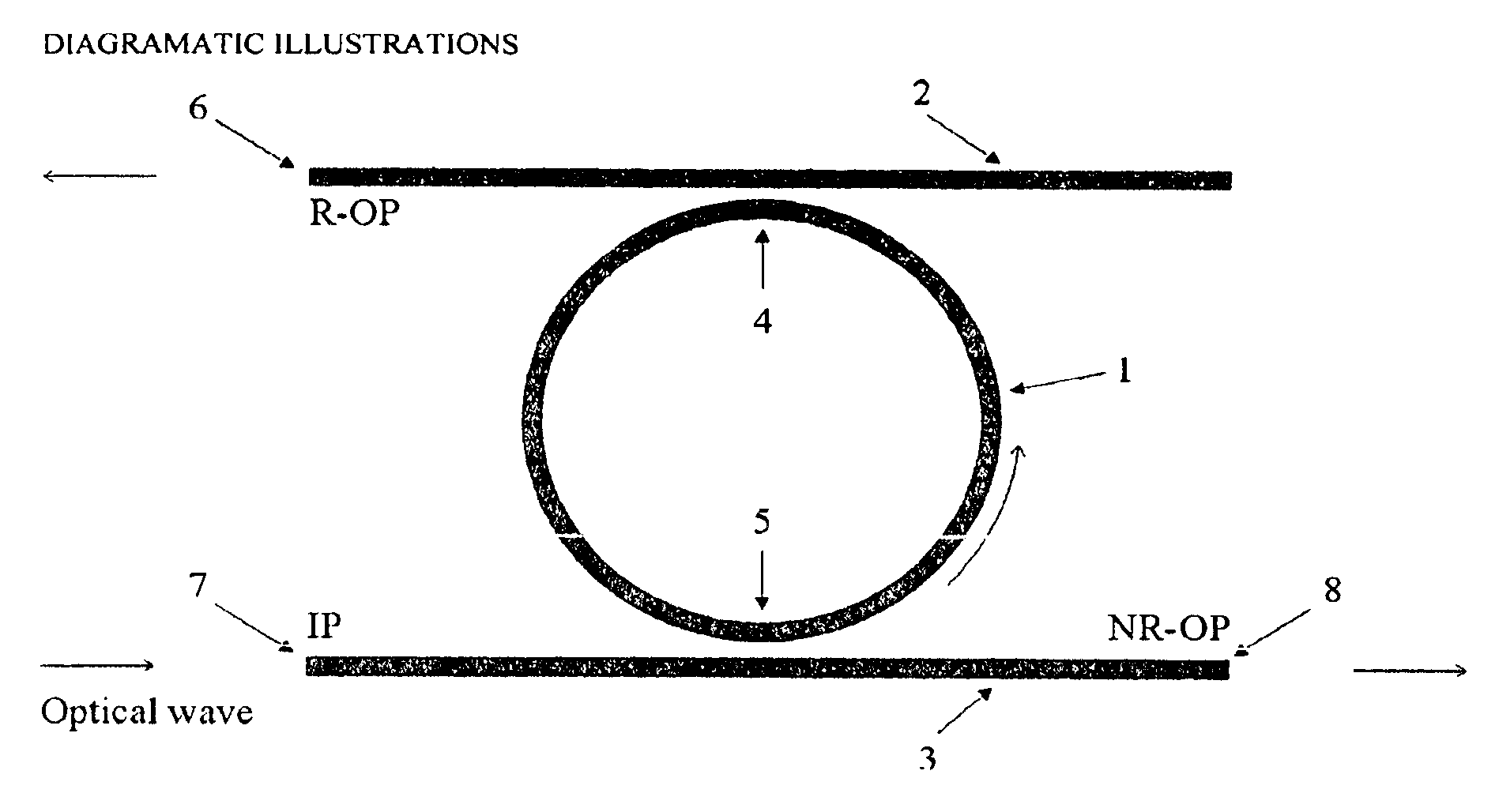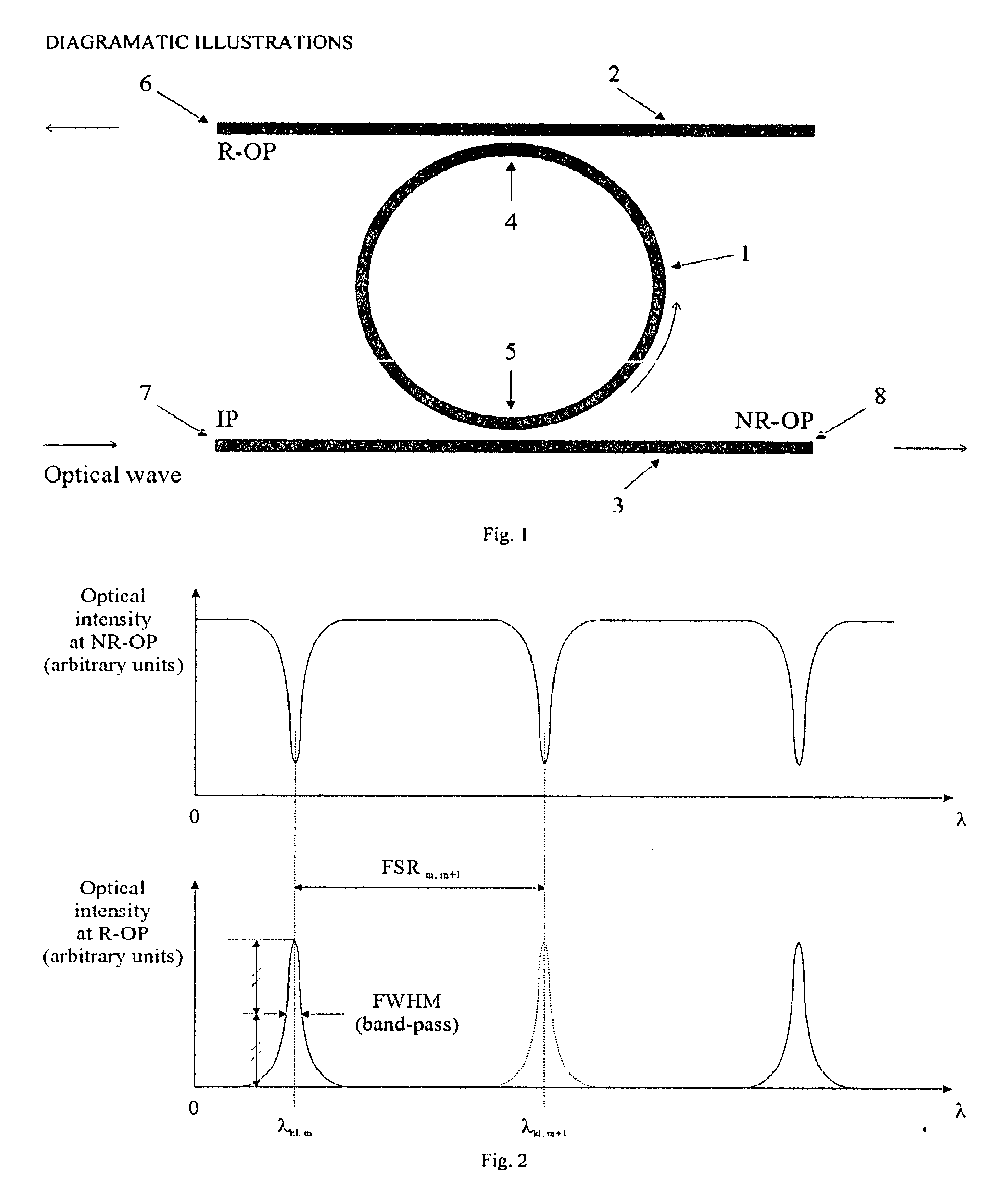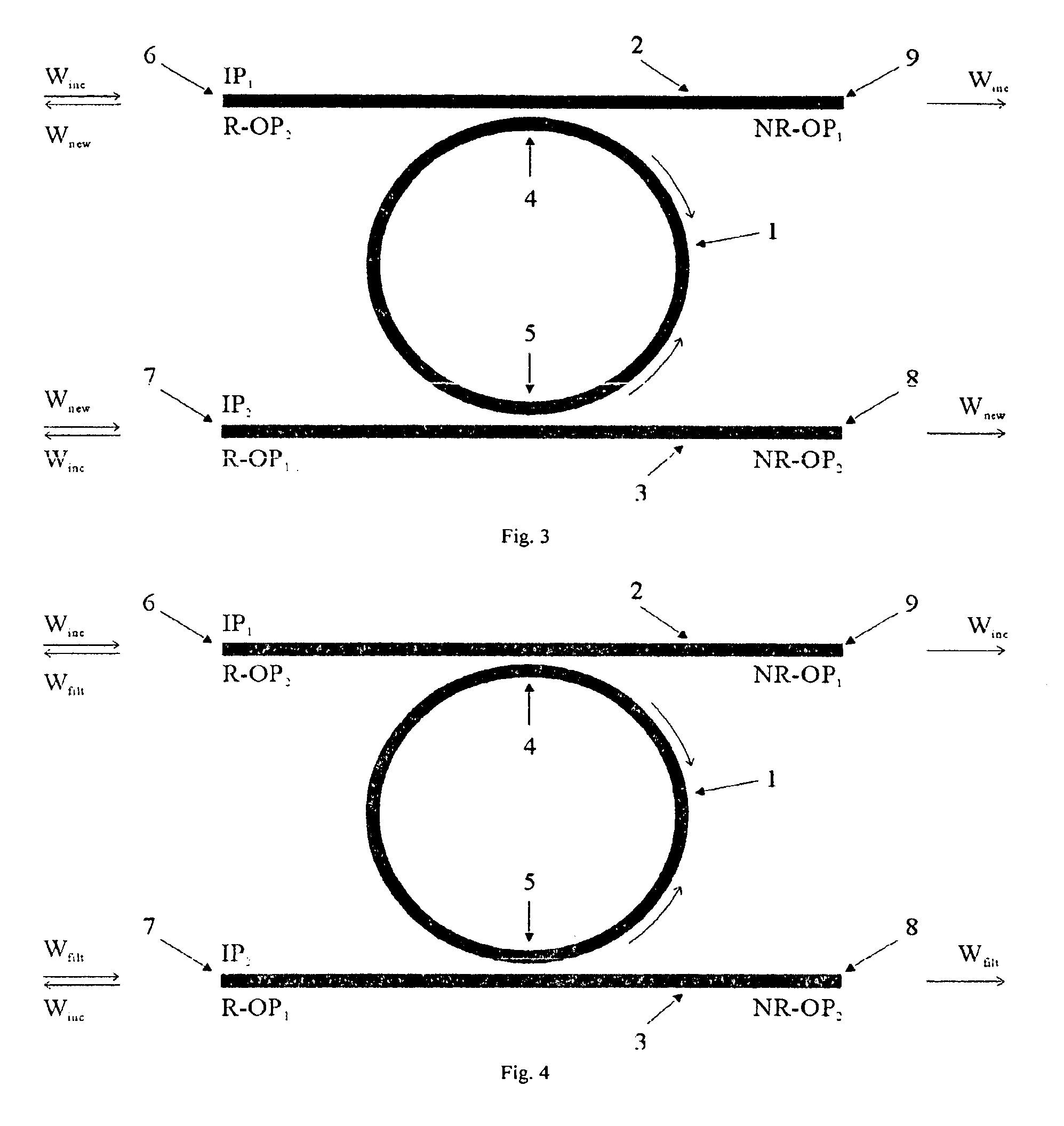Method of implementing the kerr effect in an integrated ring resonator (the kerr integrated optical ring filter) to achieve all-optical wavelength switching, as well as all-optical tunable filtering, add-and -drop multiplexing, space switching and optical intensity modulation
- Summary
- Abstract
- Description
- Claims
- Application Information
AI Technical Summary
Benefits of technology
Problems solved by technology
Method used
Image
Examples
Embodiment Construction
[0013]FIG. 1K-IORF top view.
[0014]FIG. 2 Resonant curves of the ring resonator.
[0015]FIG. 3K-IORF, resonance shifting and wavelength switching.
[0016]FIG. 4K-IORF as an all-optical tunable filter.
[0017]FIG. 5 Tuning of the resonance curves of the K-IORF as an all-optical tunable filter.
[0018]FIG. 6K-IORF as an all-optical add-and-drop multiplexer.
[0019]FIG. 7K-IORF as an all-optical optical modulator.
[0020]FIG. 8 Tuning of the resonance curves of the K-IORF as an all-optical optical modulator.
[0021]FIG. 9K-IORF with arc-buses.
[0022]FIG. 10 Race-track K-IORF top view.
[0023]FIG. 11 Vertical coupler K-IORF.
DETAILED DESCRIPTION OF THE INVENTION
[0024]The Kerr Integrated Optical Ring Filter (K-IORF) sketched in FIG. 1 consists of:[0025]an optical ring resonator (the “ring”) (FIG. 1, 1);[0026]an upper waveguide or upper bus waveguide (the “upper bus”) (FIG. 1, 2); and[0027]a lower waveguide or lower bus waveguide (the “lower bus”) (FIG. 1, 3).
1. Manufacturing of the K-IORF.
[0028]The K-IORF ...
PUM
 Login to View More
Login to View More Abstract
Description
Claims
Application Information
 Login to View More
Login to View More - R&D
- Intellectual Property
- Life Sciences
- Materials
- Tech Scout
- Unparalleled Data Quality
- Higher Quality Content
- 60% Fewer Hallucinations
Browse by: Latest US Patents, China's latest patents, Technical Efficacy Thesaurus, Application Domain, Technology Topic, Popular Technical Reports.
© 2025 PatSnap. All rights reserved.Legal|Privacy policy|Modern Slavery Act Transparency Statement|Sitemap|About US| Contact US: help@patsnap.com



